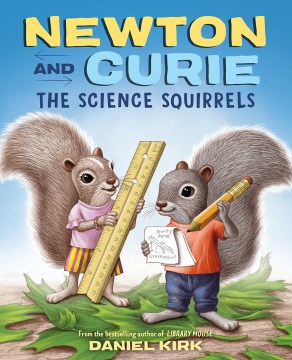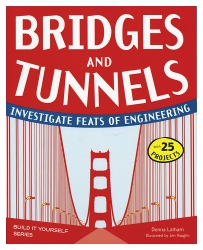Newton and Curie are a pair of squirrels AND scientists. They spend their days near a school watching children on the playground and in their classroom. They observe the kids on the swings and seesaw and then watch the teacher’s lessons through the classroom window. Using what they observe, they build their own versions and discuss concepts like gravity, force and energy. One day, their bird friends’ nest falls out of the tree and Newton and Curie are to the rescue. They use a lever to enter the classroom and obtain materials necessary to fashion a pulley to return the nest to its place on the tree branch. And, they declare at the end “Science is fun!” . I have to agree!

This story is a great way to introduce some basic physics concepts in a fun, engaging manner. Illustrations are beautifully drawn and there is accompanying information about the real Newton and Curie, as well as a glossary and resource list. Author/illustrator Daniel Kirk, who gave us Library Mouse, creates a sweetly drawn, humorous and accessible introduction to scientific concepts that are exemplified all around us – especially on the playground!

